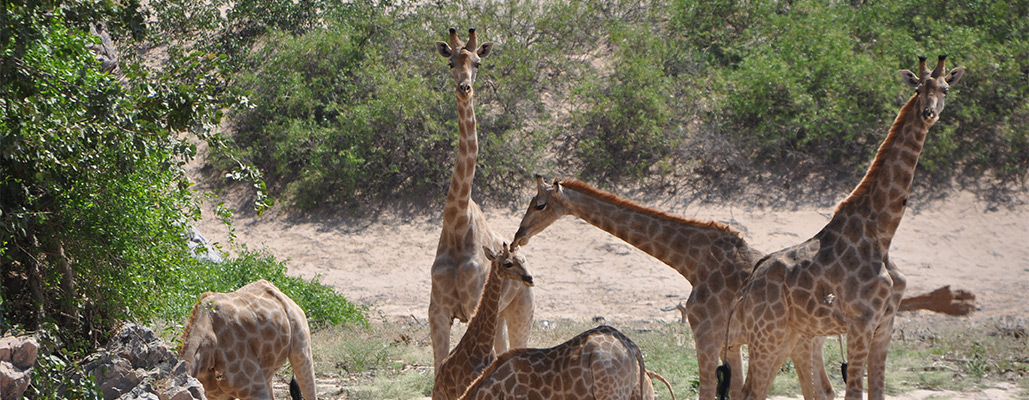In 1985 the estimated population of giraffes in Africa was between 151,702 and 163,452 individuals. By 2015, this figure had reduced to an estimated 97,562, representing a population decline of 36-40% over three generations (30 years, 1985-2015). Giraffe populations are highly fragmented across Africa, and are subject to different pressures and threats specific to country and region. Overall, the number of giraffes in Africa is generally decreasing. However, there is local variation: populations in East Africa are generally decreasing; populations in southern Africa are generally increasing. In West Africa, the single population is increasing, but in Central Africa, the population is decreasing.
The most abundant subspecies of giraffe is G. c. tippelskirchi, followed by G. c. giraffa. Both subspecies account for almost half the giraffe population in Africa. Of the nine currently recognised subspecies, four are increasing (G. c. angolensis, G. c. giraffa, G. c. peralta, G. c. rothschildi), four are decreasing (G. c. antiquorum, G. c. camelopardalis, G. c. reticulata, G. c. tippelskirchi), and one is stable (G. c. thornicrofti) (IUCN Red List assessment, Giraffa camelopardalis).
Limited research has been undertaken on giraffe across Africa. In 2015, the giraffe was listed as ‘Vulnerable’ on the IUCN Red List of Threatened Species. Subspecies assessments are currently underway.



